-
EXECUTIVE SUMMARY
-
Market
-
Overview
-
Key Findings
-
Market Segmentation
-
Competitive
-
Landscape
-
Challenges and Opportunities
-
Future Outlook
-
MARKET INTRODUCTION
-
Definition
-
Scope
- Research Objective
- Assumption
-
of the study
-
2.2.3.
-
Limitations
-
RESEARCH METHODOLOGY
-
Overview
-
Data Mining
-
Secondary Research
-
Primary Research
- Primary Interviews
- Breakdown of Primary Respondents
-
and Information Gathering Process
-
Forecasting Model
-
Market Size Estimation
- Bottom-Up
- Top-Down Approach
-
Approach
-
Data Triangulation
-
3.8.
-
Validation
-
MARKET DYNAMICS
-
Overview
-
4.2.
-
Drivers
-
Restraints
-
Opportunities
-
MARKET FACTOR ANALYSIS
-
Value chain Analysis
-
Porter's Five Forces Analysis
- Bargaining Power of Buyers
- Threat of Substitutes
- Intensity
-
5.2.1.
-
Bargaining Power of Suppliers
-
5.2.3.
-
Threat of New Entrants
-
of Rivalry
-
COVID-19 Impact Analysis
- Market Impact Analysis
- Regional Impact
- Opportunity and Threat Analysis
-
IMPLANTABLE CARDIOVERTER DEFIBRILLATOR (ICD) MARKET, BY PRODUCT
-
TYPE (USD BILLION)
-
Single Chamber ICD
-
Dual Chamber ICD
-
Triple Chamber ICD
-
Subcutaneous ICD
-
IMPLANTABLE CARDIOVERTER
-
DEFIBRILLATOR (ICD) MARKET, BY END USER (USD BILLION)
-
Hospitals
-
7.2.
-
Cardiology Clinics
-
Ambulatory Surgical Centers
-
IMPLANTABLE CARDIOVERTER
-
DEFIBRILLATOR (ICD) MARKET, BY PATIENT TYPE (USD BILLION)
-
Adults
-
Pediatric
-
Geriatric
-
IMPLANTABLE CARDIOVERTER DEFIBRILLATOR
-
(ICD) MARKET, BY DISTRIBUTION CHANNEL (USD BILLION)
-
Direct Sales
-
Distributors
-
Online Sales
-
IMPLANTABLE CARDIOVERTER DEFIBRILLATOR
-
(ICD) MARKET, BY REGIONAL (USD BILLION)
-
North America
- Canada
-
10.1.1.
-
US
-
Europe
- Germany
- UK
- France
- Russia
- Italy
- Spain
- Rest of Europe
-
APAC
- China
- Japan
- South Korea
- Malaysia
- Indonesia
- Rest of APAC
-
10.3.2.
-
India
-
10.3.6.
-
Thailand
-
South America
- Brazil
- Mexico
- Argentina
-
10.4.4.
-
Rest of South America
-
MEA
- GCC Countries
- Rest of MEA
-
10.5.2.
-
South Africa
-
COMPETITIVE LANDSCAPE
-
Overview
-
Competitive Analysis
-
Market share Analysis
-
Major Growth Strategy in the Implantable Cardioverter Defibrillator
-
(ICD) Market
-
Competitive Benchmarking
-
Leading Players in
-
Terms of Number of Developments in the Implantable Cardioverter Defibrillator (ICD)
-
Market
-
Key developments and growth strategies
- New Product
- Merger & Acquisitions
-
Launch/Service Deployment
-
11.7.3.
-
Joint Ventures
-
Major Players Financial Matrix
- Sales and
- Major Players R&D Expenditure. 2023
-
Operating Income
-
12.
-
COMPANY PROFILES
-
Cook Medical
- Financial Overview
- Key Developments
- SWOT Analysis
- Key Strategies
-
12.1.2.
-
Products Offered
-
Cardiac Science
- Financial Overview
- Products Offered
- Key Developments
- SWOT
- Key Strategies
-
Analysis
-
Zoll Medical
- Financial
- Products Offered
- Key Developments
- Key Strategies
-
Overview
-
12.3.4.
-
SWOT Analysis
-
Sorin Group
- Products Offered
- Key Developments
- SWOT Analysis
- Key Strategies
-
12.4.1.
-
Financial Overview
-
LivaNova
- Financial Overview
- Products Offered
- Key Developments
- SWOT Analysis
- Key Strategies
-
Cameron Health
- Financial Overview
- Products Offered
- Key
- SWOT Analysis
- Key Strategies
- Financial Overview
- Products Offered
- SWOT Analysis
- Key Strategies
- Financial Overview
- Products Offered
- Key Developments
- SWOT Analysis
- Key Strategies
-
Developments
-
12.7.
-
Philips
-
12.7.3.
-
Key Developments
-
12.8.
-
Abbott Laboratories
-
Osypka Medical
- Financial Overview
- Products
- Key Developments
- SWOT Analysis
-
Offered
-
12.9.5.
-
Key Strategies
-
Boston Scientific
- Financial Overview
- Products Offered
- Key Developments
- SWOT
- Key Strategies
-
Analysis
-
Amiiga
- Financial
- Products Offered
- Key Developments
- Key Strategies
-
Overview
-
12.11.4.
-
SWOT Analysis
-
Biotronik
- Products Offered
- Key Developments
- SWOT Analysis
- Key Strategies
-
12.12.1.
-
Financial Overview
-
Medtronic
- Financial Overview
- Products Offered
- SWOT Analysis
- Key Strategies
-
12.13.3.
-
Key Developments
-
St. Jude Medical
- Financial Overview
- Products
- Key Developments
- SWOT Analysis
-
Offered
-
12.14.5.
-
Key Strategies
-
Terumo Corporation
- Financial Overview
- Products Offered
- Key Developments
- SWOT
- Key Strategies
-
Analysis
-
APPENDIX
-
References
-
Related Reports
-
LIST OF TABLES
-
LIST OF ASSUMPTIONS
-
NORTH AMERICA IMPLANTABLE CARDIOVERTER DEFIBRILLATOR (ICD) MARKET
-
SIZE ESTIMATES & FORECAST, BY PRODUCT TYPE, 2019-2032 (USD BILLIONS)
-
TABLE
-
NORTH AMERICA IMPLANTABLE CARDIOVERTER DEFIBRILLATOR (ICD) MARKET SIZE ESTIMATES
-
& FORECAST, BY END USER, 2019-2032 (USD BILLIONS)
-
NORTH AMERICA
-
IMPLANTABLE CARDIOVERTER DEFIBRILLATOR (ICD) MARKET SIZE ESTIMATES & FORECAST,
-
BY PATIENT TYPE, 2019-2032 (USD BILLIONS)
-
NORTH AMERICA IMPLANTABLE
-
CARDIOVERTER DEFIBRILLATOR (ICD) MARKET SIZE ESTIMATES & FORECAST, BY DISTRIBUTION
-
CHANNEL, 2019-2032 (USD BILLIONS)
-
NORTH AMERICA IMPLANTABLE CARDIOVERTER
-
DEFIBRILLATOR (ICD) MARKET SIZE ESTIMATES & FORECAST, BY REGIONAL, 2019-2032
-
(USD BILLIONS)
-
US IMPLANTABLE CARDIOVERTER DEFIBRILLATOR (ICD) MARKET
-
SIZE ESTIMATES & FORECAST, BY PRODUCT TYPE, 2019-2032 (USD BILLIONS)
-
TABLE
-
US IMPLANTABLE CARDIOVERTER DEFIBRILLATOR (ICD) MARKET SIZE ESTIMATES & FORECAST,
-
BY END USER, 2019-2032 (USD BILLIONS)
-
US IMPLANTABLE CARDIOVERTER
-
DEFIBRILLATOR (ICD) MARKET SIZE ESTIMATES & FORECAST, BY PATIENT TYPE, 2019-2032
-
(USD BILLIONS)
-
US IMPLANTABLE CARDIOVERTER DEFIBRILLATOR (ICD) MARKET
-
SIZE ESTIMATES & FORECAST, BY DISTRIBUTION CHANNEL, 2019-2032 (USD BILLIONS)
-
US IMPLANTABLE CARDIOVERTER DEFIBRILLATOR (ICD) MARKET SIZE ESTIMATES
-
& FORECAST, BY REGIONAL, 2019-2032 (USD BILLIONS)
-
CANADA IMPLANTABLE
-
CARDIOVERTER DEFIBRILLATOR (ICD) MARKET SIZE ESTIMATES & FORECAST, BY PRODUCT
-
TYPE, 2019-2032 (USD BILLIONS)
-
CANADA IMPLANTABLE CARDIOVERTER DEFIBRILLATOR
-
(ICD) MARKET SIZE ESTIMATES & FORECAST, BY END USER, 2019-2032 (USD BILLIONS)
-
CANADA IMPLANTABLE CARDIOVERTER DEFIBRILLATOR (ICD) MARKET SIZE
-
ESTIMATES & FORECAST, BY PATIENT TYPE, 2019-2032 (USD BILLIONS)
-
TABLE
-
CANADA IMPLANTABLE CARDIOVERTER DEFIBRILLATOR (ICD) MARKET SIZE ESTIMATES &
-
FORECAST, BY DISTRIBUTION CHANNEL, 2019-2032 (USD BILLIONS)
-
CANADA
-
IMPLANTABLE CARDIOVERTER DEFIBRILLATOR (ICD) MARKET SIZE ESTIMATES & FORECAST,
-
BY REGIONAL, 2019-2032 (USD BILLIONS)
-
EUROPE IMPLANTABLE CARDIOVERTER
-
DEFIBRILLATOR (ICD) MARKET SIZE ESTIMATES & FORECAST, BY PRODUCT TYPE, 2019-2032
-
(USD BILLIONS)
-
EUROPE IMPLANTABLE CARDIOVERTER DEFIBRILLATOR (ICD)
-
MARKET SIZE ESTIMATES & FORECAST, BY END USER, 2019-2032 (USD BILLIONS)
-
EUROPE IMPLANTABLE CARDIOVERTER DEFIBRILLATOR (ICD) MARKET SIZE ESTIMATES
-
& FORECAST, BY PATIENT TYPE, 2019-2032 (USD BILLIONS)
-
EUROPE
-
IMPLANTABLE CARDIOVERTER DEFIBRILLATOR (ICD) MARKET SIZE ESTIMATES & FORECAST,
-
BY DISTRIBUTION CHANNEL, 2019-2032 (USD BILLIONS)
-
EUROPE IMPLANTABLE
-
CARDIOVERTER DEFIBRILLATOR (ICD) MARKET SIZE ESTIMATES & FORECAST, BY REGIONAL,
-
GERMANY IMPLANTABLE CARDIOVERTER DEFIBRILLATOR
-
(ICD) MARKET SIZE ESTIMATES & FORECAST, BY PRODUCT TYPE, 2019-2032 (USD BILLIONS)
-
GERMANY IMPLANTABLE CARDIOVERTER DEFIBRILLATOR (ICD) MARKET SIZE
-
ESTIMATES & FORECAST, BY END USER, 2019-2032 (USD BILLIONS)
-
TABLE 24.
-
GERMANY IMPLANTABLE CARDIOVERTER DEFIBRILLATOR (ICD) MARKET SIZE ESTIMATES &
-
FORECAST, BY PATIENT TYPE, 2019-2032 (USD BILLIONS)
-
GERMANY IMPLANTABLE
-
CARDIOVERTER DEFIBRILLATOR (ICD) MARKET SIZE ESTIMATES & FORECAST, BY DISTRIBUTION
-
CHANNEL, 2019-2032 (USD BILLIONS)
-
GERMANY IMPLANTABLE CARDIOVERTER
-
DEFIBRILLATOR (ICD) MARKET SIZE ESTIMATES & FORECAST, BY REGIONAL, 2019-2032
-
(USD BILLIONS)
-
UK IMPLANTABLE CARDIOVERTER DEFIBRILLATOR (ICD) MARKET
-
SIZE ESTIMATES & FORECAST, BY PRODUCT TYPE, 2019-2032 (USD BILLIONS)
-
TABLE
-
UK IMPLANTABLE CARDIOVERTER DEFIBRILLATOR (ICD) MARKET SIZE ESTIMATES &
-
FORECAST, BY END USER, 2019-2032 (USD BILLIONS)
-
UK IMPLANTABLE CARDIOVERTER
-
DEFIBRILLATOR (ICD) MARKET SIZE ESTIMATES & FORECAST, BY PATIENT TYPE, 2019-2032
-
(USD BILLIONS)
-
UK IMPLANTABLE CARDIOVERTER DEFIBRILLATOR (ICD) MARKET
-
SIZE ESTIMATES & FORECAST, BY DISTRIBUTION CHANNEL, 2019-2032 (USD BILLIONS)
-
UK IMPLANTABLE CARDIOVERTER DEFIBRILLATOR (ICD) MARKET SIZE ESTIMATES
-
& FORECAST, BY REGIONAL, 2019-2032 (USD BILLIONS)
-
FRANCE IMPLANTABLE
-
CARDIOVERTER DEFIBRILLATOR (ICD) MARKET SIZE ESTIMATES & FORECAST, BY PRODUCT
-
TYPE, 2019-2032 (USD BILLIONS)
-
FRANCE IMPLANTABLE CARDIOVERTER DEFIBRILLATOR
-
(ICD) MARKET SIZE ESTIMATES & FORECAST, BY END USER, 2019-2032 (USD BILLIONS)
-
FRANCE IMPLANTABLE CARDIOVERTER DEFIBRILLATOR (ICD) MARKET SIZE
-
ESTIMATES & FORECAST, BY PATIENT TYPE, 2019-2032 (USD BILLIONS)
-
TABLE
-
FRANCE IMPLANTABLE CARDIOVERTER DEFIBRILLATOR (ICD) MARKET SIZE ESTIMATES &
-
FORECAST, BY DISTRIBUTION CHANNEL, 2019-2032 (USD BILLIONS)
-
FRANCE
-
IMPLANTABLE CARDIOVERTER DEFIBRILLATOR (ICD) MARKET SIZE ESTIMATES & FORECAST,
-
BY REGIONAL, 2019-2032 (USD BILLIONS)
-
RUSSIA IMPLANTABLE CARDIOVERTER
-
DEFIBRILLATOR (ICD) MARKET SIZE ESTIMATES & FORECAST, BY PRODUCT TYPE, 2019-2032
-
(USD BILLIONS)
-
RUSSIA IMPLANTABLE CARDIOVERTER DEFIBRILLATOR (ICD)
-
MARKET SIZE ESTIMATES & FORECAST, BY END USER, 2019-2032 (USD BILLIONS)
-
RUSSIA IMPLANTABLE CARDIOVERTER DEFIBRILLATOR (ICD) MARKET SIZE ESTIMATES
-
& FORECAST, BY PATIENT TYPE, 2019-2032 (USD BILLIONS)
-
RUSSIA
-
IMPLANTABLE CARDIOVERTER DEFIBRILLATOR (ICD) MARKET SIZE ESTIMATES & FORECAST,
-
BY DISTRIBUTION CHANNEL, 2019-2032 (USD BILLIONS)
-
RUSSIA IMPLANTABLE
-
CARDIOVERTER DEFIBRILLATOR (ICD) MARKET SIZE ESTIMATES & FORECAST, BY REGIONAL,
-
ITALY IMPLANTABLE CARDIOVERTER DEFIBRILLATOR
-
(ICD) MARKET SIZE ESTIMATES & FORECAST, BY PRODUCT TYPE, 2019-2032 (USD BILLIONS)
-
ITALY IMPLANTABLE CARDIOVERTER DEFIBRILLATOR (ICD) MARKET SIZE ESTIMATES
-
& FORECAST, BY END USER, 2019-2032 (USD BILLIONS)
-
ITALY IMPLANTABLE
-
CARDIOVERTER DEFIBRILLATOR (ICD) MARKET SIZE ESTIMATES & FORECAST, BY PATIENT
-
TYPE, 2019-2032 (USD BILLIONS)
-
ITALY IMPLANTABLE CARDIOVERTER DEFIBRILLATOR
-
(ICD) MARKET SIZE ESTIMATES & FORECAST, BY DISTRIBUTION CHANNEL, 2019-2032 (USD
-
BILLIONS)
-
ITALY IMPLANTABLE CARDIOVERTER DEFIBRILLATOR (ICD) MARKET
-
SIZE ESTIMATES & FORECAST, BY REGIONAL, 2019-2032 (USD BILLIONS)
-
TABLE
-
SPAIN IMPLANTABLE CARDIOVERTER DEFIBRILLATOR (ICD) MARKET SIZE ESTIMATES &
-
FORECAST, BY PRODUCT TYPE, 2019-2032 (USD BILLIONS)
-
SPAIN IMPLANTABLE
-
CARDIOVERTER DEFIBRILLATOR (ICD) MARKET SIZE ESTIMATES & FORECAST, BY END USER,
-
SPAIN IMPLANTABLE CARDIOVERTER DEFIBRILLATOR
-
(ICD) MARKET SIZE ESTIMATES & FORECAST, BY PATIENT TYPE, 2019-2032 (USD BILLIONS)
-
SPAIN IMPLANTABLE CARDIOVERTER DEFIBRILLATOR (ICD) MARKET SIZE ESTIMATES
-
& FORECAST, BY DISTRIBUTION CHANNEL, 2019-2032 (USD BILLIONS)
-
TABLE 51.
-
SPAIN IMPLANTABLE CARDIOVERTER DEFIBRILLATOR (ICD) MARKET SIZE ESTIMATES & FORECAST,
-
BY REGIONAL, 2019-2032 (USD BILLIONS)
-
REST OF EUROPE IMPLANTABLE
-
CARDIOVERTER DEFIBRILLATOR (ICD) MARKET SIZE ESTIMATES & FORECAST, BY PRODUCT
-
TYPE, 2019-2032 (USD BILLIONS)
-
REST OF EUROPE IMPLANTABLE CARDIOVERTER
-
DEFIBRILLATOR (ICD) MARKET SIZE ESTIMATES & FORECAST, BY END USER, 2019-2032
-
(USD BILLIONS)
-
REST OF EUROPE IMPLANTABLE CARDIOVERTER DEFIBRILLATOR
-
(ICD) MARKET SIZE ESTIMATES & FORECAST, BY PATIENT TYPE, 2019-2032 (USD BILLIONS)
-
REST OF EUROPE IMPLANTABLE CARDIOVERTER DEFIBRILLATOR (ICD) MARKET
-
SIZE ESTIMATES & FORECAST, BY DISTRIBUTION CHANNEL, 2019-2032 (USD BILLIONS)
-
REST OF EUROPE IMPLANTABLE CARDIOVERTER DEFIBRILLATOR (ICD) MARKET
-
SIZE ESTIMATES & FORECAST, BY REGIONAL, 2019-2032 (USD BILLIONS)
-
TABLE
-
APAC IMPLANTABLE CARDIOVERTER DEFIBRILLATOR (ICD) MARKET SIZE ESTIMATES &
-
FORECAST, BY PRODUCT TYPE, 2019-2032 (USD BILLIONS)
-
APAC IMPLANTABLE
-
CARDIOVERTER DEFIBRILLATOR (ICD) MARKET SIZE ESTIMATES & FORECAST, BY END USER,
-
APAC IMPLANTABLE CARDIOVERTER DEFIBRILLATOR
-
(ICD) MARKET SIZE ESTIMATES & FORECAST, BY PATIENT TYPE, 2019-2032 (USD BILLIONS)
-
APAC IMPLANTABLE CARDIOVERTER DEFIBRILLATOR (ICD) MARKET SIZE ESTIMATES
-
& FORECAST, BY DISTRIBUTION CHANNEL, 2019-2032 (USD BILLIONS)
-
TABLE 61.
-
APAC IMPLANTABLE CARDIOVERTER DEFIBRILLATOR (ICD) MARKET SIZE ESTIMATES & FORECAST,
-
BY REGIONAL, 2019-2032 (USD BILLIONS)
-
CHINA IMPLANTABLE CARDIOVERTER
-
DEFIBRILLATOR (ICD) MARKET SIZE ESTIMATES & FORECAST, BY PRODUCT TYPE, 2019-2032
-
(USD BILLIONS)
-
CHINA IMPLANTABLE CARDIOVERTER DEFIBRILLATOR (ICD)
-
MARKET SIZE ESTIMATES & FORECAST, BY END USER, 2019-2032 (USD BILLIONS)
-
CHINA IMPLANTABLE CARDIOVERTER DEFIBRILLATOR (ICD) MARKET SIZE ESTIMATES
-
& FORECAST, BY PATIENT TYPE, 2019-2032 (USD BILLIONS)
-
CHINA
-
IMPLANTABLE CARDIOVERTER DEFIBRILLATOR (ICD) MARKET SIZE ESTIMATES & FORECAST,
-
BY DISTRIBUTION CHANNEL, 2019-2032 (USD BILLIONS)
-
CHINA IMPLANTABLE
-
CARDIOVERTER DEFIBRILLATOR (ICD) MARKET SIZE ESTIMATES & FORECAST, BY REGIONAL,
-
INDIA IMPLANTABLE CARDIOVERTER DEFIBRILLATOR
-
(ICD) MARKET SIZE ESTIMATES & FORECAST, BY PRODUCT TYPE, 2019-2032 (USD BILLIONS)
-
INDIA IMPLANTABLE CARDIOVERTER DEFIBRILLATOR (ICD) MARKET SIZE ESTIMATES
-
& FORECAST, BY END USER, 2019-2032 (USD BILLIONS)
-
INDIA IMPLANTABLE
-
CARDIOVERTER DEFIBRILLATOR (ICD) MARKET SIZE ESTIMATES & FORECAST, BY PATIENT
-
TYPE, 2019-2032 (USD BILLIONS)
-
INDIA IMPLANTABLE CARDIOVERTER DEFIBRILLATOR
-
(ICD) MARKET SIZE ESTIMATES & FORECAST, BY DISTRIBUTION CHANNEL, 2019-2032 (USD
-
BILLIONS)
-
INDIA IMPLANTABLE CARDIOVERTER DEFIBRILLATOR (ICD) MARKET
-
SIZE ESTIMATES & FORECAST, BY REGIONAL, 2019-2032 (USD BILLIONS)
-
TABLE
-
JAPAN IMPLANTABLE CARDIOVERTER DEFIBRILLATOR (ICD) MARKET SIZE ESTIMATES &
-
FORECAST, BY PRODUCT TYPE, 2019-2032 (USD BILLIONS)
-
JAPAN IMPLANTABLE
-
CARDIOVERTER DEFIBRILLATOR (ICD) MARKET SIZE ESTIMATES & FORECAST, BY END USER,
-
JAPAN IMPLANTABLE CARDIOVERTER DEFIBRILLATOR
-
(ICD) MARKET SIZE ESTIMATES & FORECAST, BY PATIENT TYPE, 2019-2032 (USD BILLIONS)
-
JAPAN IMPLANTABLE CARDIOVERTER DEFIBRILLATOR (ICD) MARKET SIZE ESTIMATES
-
& FORECAST, BY DISTRIBUTION CHANNEL, 2019-2032 (USD BILLIONS)
-
TABLE 76.
-
JAPAN IMPLANTABLE CARDIOVERTER DEFIBRILLATOR (ICD) MARKET SIZE ESTIMATES & FORECAST,
-
BY REGIONAL, 2019-2032 (USD BILLIONS)
-
SOUTH KOREA IMPLANTABLE CARDIOVERTER
-
DEFIBRILLATOR (ICD) MARKET SIZE ESTIMATES & FORECAST, BY PRODUCT TYPE, 2019-2032
-
(USD BILLIONS)
-
SOUTH KOREA IMPLANTABLE CARDIOVERTER DEFIBRILLATOR
-
(ICD) MARKET SIZE ESTIMATES & FORECAST, BY END USER, 2019-2032 (USD BILLIONS)
-
SOUTH KOREA IMPLANTABLE CARDIOVERTER DEFIBRILLATOR (ICD) MARKET
-
SIZE ESTIMATES & FORECAST, BY PATIENT TYPE, 2019-2032 (USD BILLIONS)
-
TABLE
-
SOUTH KOREA IMPLANTABLE CARDIOVERTER DEFIBRILLATOR (ICD) MARKET SIZE ESTIMATES
-
& FORECAST, BY DISTRIBUTION CHANNEL, 2019-2032 (USD BILLIONS)
-
TABLE 81.
-
SOUTH KOREA IMPLANTABLE CARDIOVERTER DEFIBRILLATOR (ICD) MARKET SIZE ESTIMATES &
-
FORECAST, BY REGIONAL, 2019-2032 (USD BILLIONS)
-
MALAYSIA IMPLANTABLE
-
CARDIOVERTER DEFIBRILLATOR (ICD) MARKET SIZE ESTIMATES & FORECAST, BY PRODUCT
-
TYPE, 2019-2032 (USD BILLIONS)
-
MALAYSIA IMPLANTABLE CARDIOVERTER
-
DEFIBRILLATOR (ICD) MARKET SIZE ESTIMATES & FORECAST, BY END USER, 2019-2032
-
(USD BILLIONS)
-
MALAYSIA IMPLANTABLE CARDIOVERTER DEFIBRILLATOR (ICD)
-
MARKET SIZE ESTIMATES & FORECAST, BY PATIENT TYPE, 2019-2032 (USD BILLIONS)
-
MALAYSIA IMPLANTABLE CARDIOVERTER DEFIBRILLATOR (ICD) MARKET SIZE
-
ESTIMATES & FORECAST, BY DISTRIBUTION CHANNEL, 2019-2032 (USD BILLIONS)
-
MALAYSIA IMPLANTABLE CARDIOVERTER DEFIBRILLATOR (ICD) MARKET SIZE ESTIMATES
-
& FORECAST, BY REGIONAL, 2019-2032 (USD BILLIONS)
-
THAILAND IMPLANTABLE
-
CARDIOVERTER DEFIBRILLATOR (ICD) MARKET SIZE ESTIMATES & FORECAST, BY PRODUCT
-
TYPE, 2019-2032 (USD BILLIONS)
-
THAILAND IMPLANTABLE CARDIOVERTER
-
DEFIBRILLATOR (ICD) MARKET SIZE ESTIMATES & FORECAST, BY END USER, 2019-2032
-
(USD BILLIONS)
-
THAILAND IMPLANTABLE CARDIOVERTER DEFIBRILLATOR (ICD)
-
MARKET SIZE ESTIMATES & FORECAST, BY PATIENT TYPE, 2019-2032 (USD BILLIONS)
-
THAILAND IMPLANTABLE CARDIOVERTER DEFIBRILLATOR (ICD) MARKET SIZE
-
ESTIMATES & FORECAST, BY DISTRIBUTION CHANNEL, 2019-2032 (USD BILLIONS)
-
THAILAND IMPLANTABLE CARDIOVERTER DEFIBRILLATOR (ICD) MARKET SIZE ESTIMATES
-
& FORECAST, BY REGIONAL, 2019-2032 (USD BILLIONS)
-
INDONESIA
-
IMPLANTABLE CARDIOVERTER DEFIBRILLATOR (ICD) MARKET SIZE ESTIMATES & FORECAST,
-
BY PRODUCT TYPE, 2019-2032 (USD BILLIONS)
-
INDONESIA IMPLANTABLE
-
CARDIOVERTER DEFIBRILLATOR (ICD) MARKET SIZE ESTIMATES & FORECAST, BY END USER,
-
INDONESIA IMPLANTABLE CARDIOVERTER DEFIBRILLATOR
-
(ICD) MARKET SIZE ESTIMATES & FORECAST, BY PATIENT TYPE, 2019-2032 (USD BILLIONS)
-
INDONESIA IMPLANTABLE CARDIOVERTER DEFIBRILLATOR (ICD) MARKET SIZE
-
ESTIMATES & FORECAST, BY DISTRIBUTION CHANNEL, 2019-2032 (USD BILLIONS)
-
INDONESIA IMPLANTABLE CARDIOVERTER DEFIBRILLATOR (ICD) MARKET SIZE ESTIMATES
-
& FORECAST, BY REGIONAL, 2019-2032 (USD BILLIONS)
-
REST OF APAC
-
IMPLANTABLE CARDIOVERTER DEFIBRILLATOR (ICD) MARKET SIZE ESTIMATES & FORECAST,
-
BY PRODUCT TYPE, 2019-2032 (USD BILLIONS)
-
REST OF APAC IMPLANTABLE
-
CARDIOVERTER DEFIBRILLATOR (ICD) MARKET SIZE ESTIMATES & FORECAST, BY END USER,
-
REST OF APAC IMPLANTABLE CARDIOVERTER DEFIBRILLATOR
-
(ICD) MARKET SIZE ESTIMATES & FORECAST, BY PATIENT TYPE, 2019-2032 (USD BILLIONS)
-
REST OF APAC IMPLANTABLE CARDIOVERTER DEFIBRILLATOR (ICD) MARKET
-
SIZE ESTIMATES & FORECAST, BY DISTRIBUTION CHANNEL, 2019-2032 (USD BILLIONS)
-
REST OF APAC IMPLANTABLE CARDIOVERTER DEFIBRILLATOR (ICD) MARKET
-
SIZE ESTIMATES & FORECAST, BY REGIONAL, 2019-2032 (USD BILLIONS)
-
TABLE
-
SOUTH AMERICA IMPLANTABLE CARDIOVERTER DEFIBRILLATOR (ICD) MARKET SIZE ESTIMATES
-
& FORECAST, BY PRODUCT TYPE, 2019-2032 (USD BILLIONS)
-
SOUTH
-
AMERICA IMPLANTABLE CARDIOVERTER DEFIBRILLATOR (ICD) MARKET SIZE ESTIMATES &
-
FORECAST, BY END USER, 2019-2032 (USD BILLIONS)
-
SOUTH AMERICA IMPLANTABLE
-
CARDIOVERTER DEFIBRILLATOR (ICD) MARKET SIZE ESTIMATES & FORECAST, BY PATIENT
-
TYPE, 2019-2032 (USD BILLIONS)
-
SOUTH AMERICA IMPLANTABLE CARDIOVERTER
-
DEFIBRILLATOR (ICD) MARKET SIZE ESTIMATES & FORECAST, BY DISTRIBUTION CHANNEL,
-
SOUTH AMERICA IMPLANTABLE CARDIOVERTER
-
DEFIBRILLATOR (ICD) MARKET SIZE ESTIMATES & FORECAST, BY REGIONAL, 2019-2032
-
(USD BILLIONS)
-
BRAZIL IMPLANTABLE CARDIOVERTER DEFIBRILLATOR (ICD)
-
MARKET SIZE ESTIMATES & FORECAST, BY PRODUCT TYPE, 2019-2032 (USD BILLIONS)
-
BRAZIL IMPLANTABLE CARDIOVERTER DEFIBRILLATOR (ICD) MARKET SIZE
-
ESTIMATES & FORECAST, BY END USER, 2019-2032 (USD BILLIONS)
-
TABLE 109.
-
BRAZIL IMPLANTABLE CARDIOVERTER DEFIBRILLATOR (ICD) MARKET SIZE ESTIMATES &
-
FORECAST, BY PATIENT TYPE, 2019-2032 (USD BILLIONS)
-
BRAZIL IMPLANTABLE
-
CARDIOVERTER DEFIBRILLATOR (ICD) MARKET SIZE ESTIMATES & FORECAST, BY DISTRIBUTION
-
CHANNEL, 2019-2032 (USD BILLIONS)
-
BRAZIL IMPLANTABLE CARDIOVERTER
-
DEFIBRILLATOR (ICD) MARKET SIZE ESTIMATES & FORECAST, BY REGIONAL, 2019-2032
-
(USD BILLIONS)
-
MEXICO IMPLANTABLE CARDIOVERTER DEFIBRILLATOR (ICD)
-
MARKET SIZE ESTIMATES & FORECAST, BY PRODUCT TYPE, 2019-2032 (USD BILLIONS)
-
MEXICO IMPLANTABLE CARDIOVERTER DEFIBRILLATOR (ICD) MARKET SIZE
-
ESTIMATES & FORECAST, BY END USER, 2019-2032 (USD BILLIONS)
-
TABLE 114.
-
MEXICO IMPLANTABLE CARDIOVERTER DEFIBRILLATOR (ICD) MARKET SIZE ESTIMATES &
-
FORECAST, BY PATIENT TYPE, 2019-2032 (USD BILLIONS)
-
MEXICO IMPLANTABLE
-
CARDIOVERTER DEFIBRILLATOR (ICD) MARKET SIZE ESTIMATES & FORECAST, BY DISTRIBUTION
-
CHANNEL, 2019-2032 (USD BILLIONS)
-
MEXICO IMPLANTABLE CARDIOVERTER
-
DEFIBRILLATOR (ICD) MARKET SIZE ESTIMATES & FORECAST, BY REGIONAL, 2019-2032
-
(USD BILLIONS)
-
ARGENTINA IMPLANTABLE CARDIOVERTER DEFIBRILLATOR
-
(ICD) MARKET SIZE ESTIMATES & FORECAST, BY PRODUCT TYPE, 2019-2032 (USD BILLIONS)
-
ARGENTINA IMPLANTABLE CARDIOVERTER DEFIBRILLATOR (ICD) MARKET SIZE
-
ESTIMATES & FORECAST, BY END USER, 2019-2032 (USD BILLIONS)
-
TABLE 119.
-
ARGENTINA IMPLANTABLE CARDIOVERTER DEFIBRILLATOR (ICD) MARKET SIZE ESTIMATES &
-
FORECAST, BY PATIENT TYPE, 2019-2032 (USD BILLIONS)
-
ARGENTINA IMPLANTABLE
-
CARDIOVERTER DEFIBRILLATOR (ICD) MARKET SIZE ESTIMATES & FORECAST, BY DISTRIBUTION
-
CHANNEL, 2019-2032 (USD BILLIONS)
-
ARGENTINA IMPLANTABLE CARDIOVERTER
-
DEFIBRILLATOR (ICD) MARKET SIZE ESTIMATES & FORECAST, BY REGIONAL, 2019-2032
-
(USD BILLIONS)
-
REST OF SOUTH AMERICA IMPLANTABLE CARDIOVERTER DEFIBRILLATOR
-
(ICD) MARKET SIZE ESTIMATES & FORECAST, BY PRODUCT TYPE, 2019-2032 (USD BILLIONS)
-
REST OF SOUTH AMERICA IMPLANTABLE CARDIOVERTER DEFIBRILLATOR (ICD)
-
MARKET SIZE ESTIMATES & FORECAST, BY END USER, 2019-2032 (USD BILLIONS)
-
REST OF SOUTH AMERICA IMPLANTABLE CARDIOVERTER DEFIBRILLATOR (ICD)
-
MARKET SIZE ESTIMATES & FORECAST, BY PATIENT TYPE, 2019-2032 (USD BILLIONS)
-
REST OF SOUTH AMERICA IMPLANTABLE CARDIOVERTER DEFIBRILLATOR (ICD)
-
MARKET SIZE ESTIMATES & FORECAST, BY DISTRIBUTION CHANNEL, 2019-2032 (USD BILLIONS)
-
REST OF SOUTH AMERICA IMPLANTABLE CARDIOVERTER DEFIBRILLATOR (ICD)
-
MARKET SIZE ESTIMATES & FORECAST, BY REGIONAL, 2019-2032 (USD BILLIONS)
-
MEA IMPLANTABLE CARDIOVERTER DEFIBRILLATOR (ICD) MARKET SIZE ESTIMATES
-
& FORECAST, BY PRODUCT TYPE, 2019-2032 (USD BILLIONS)
-
MEA IMPLANTABLE
-
CARDIOVERTER DEFIBRILLATOR (ICD) MARKET SIZE ESTIMATES & FORECAST, BY END USER,
-
MEA IMPLANTABLE CARDIOVERTER DEFIBRILLATOR
-
(ICD) MARKET SIZE ESTIMATES & FORECAST, BY PATIENT TYPE, 2019-2032 (USD BILLIONS)
-
MEA IMPLANTABLE CARDIOVERTER DEFIBRILLATOR (ICD) MARKET SIZE ESTIMATES
-
& FORECAST, BY DISTRIBUTION CHANNEL, 2019-2032 (USD BILLIONS)
-
TABLE 131.
-
MEA IMPLANTABLE CARDIOVERTER DEFIBRILLATOR (ICD) MARKET SIZE ESTIMATES & FORECAST,
-
BY REGIONAL, 2019-2032 (USD BILLIONS)
-
GCC COUNTRIES IMPLANTABLE
-
CARDIOVERTER DEFIBRILLATOR (ICD) MARKET SIZE ESTIMATES & FORECAST, BY PRODUCT
-
TYPE, 2019-2032 (USD BILLIONS)
-
GCC COUNTRIES IMPLANTABLE CARDIOVERTER
-
DEFIBRILLATOR (ICD) MARKET SIZE ESTIMATES & FORECAST, BY END USER, 2019-2032
-
(USD BILLIONS)
-
GCC COUNTRIES IMPLANTABLE CARDIOVERTER DEFIBRILLATOR
-
(ICD) MARKET SIZE ESTIMATES & FORECAST, BY PATIENT TYPE, 2019-2032 (USD BILLIONS)
-
GCC COUNTRIES IMPLANTABLE CARDIOVERTER DEFIBRILLATOR (ICD) MARKET
-
SIZE ESTIMATES & FORECAST, BY DISTRIBUTION CHANNEL, 2019-2032 (USD BILLIONS)
-
GCC COUNTRIES IMPLANTABLE CARDIOVERTER DEFIBRILLATOR (ICD) MARKET
-
SIZE ESTIMATES & FORECAST, BY REGIONAL, 2019-2032 (USD BILLIONS)
-
TABLE
-
SOUTH AFRICA IMPLANTABLE CARDIOVERTER DEFIBRILLATOR (ICD) MARKET SIZE ESTIMATES
-
& FORECAST, BY PRODUCT TYPE, 2019-2032 (USD BILLIONS)
-
SOUTH
-
AFRICA IMPLANTABLE CARDIOVERTER DEFIBRILLATOR (ICD) MARKET SIZE ESTIMATES &
-
FORECAST, BY END USER, 2019-2032 (USD BILLIONS)
-
SOUTH AFRICA IMPLANTABLE
-
CARDIOVERTER DEFIBRILLATOR (ICD) MARKET SIZE ESTIMATES & FORECAST, BY PATIENT
-
TYPE, 2019-2032 (USD BILLIONS)
-
SOUTH AFRICA IMPLANTABLE CARDIOVERTER
-
DEFIBRILLATOR (ICD) MARKET SIZE ESTIMATES & FORECAST, BY DISTRIBUTION CHANNEL,
-
SOUTH AFRICA IMPLANTABLE CARDIOVERTER
-
DEFIBRILLATOR (ICD) MARKET SIZE ESTIMATES & FORECAST, BY REGIONAL, 2019-2032
-
(USD BILLIONS)
-
REST OF MEA IMPLANTABLE CARDIOVERTER DEFIBRILLATOR
-
(ICD) MARKET SIZE ESTIMATES & FORECAST, BY PRODUCT TYPE, 2019-2032 (USD BILLIONS)
-
REST OF MEA IMPLANTABLE CARDIOVERTER DEFIBRILLATOR (ICD) MARKET
-
SIZE ESTIMATES & FORECAST, BY END USER, 2019-2032 (USD BILLIONS)
-
TABLE
-
REST OF MEA IMPLANTABLE CARDIOVERTER DEFIBRILLATOR (ICD) MARKET SIZE ESTIMATES
-
& FORECAST, BY PATIENT TYPE, 2019-2032 (USD BILLIONS)
-
REST
-
OF MEA IMPLANTABLE CARDIOVERTER DEFIBRILLATOR (ICD) MARKET SIZE ESTIMATES &
-
FORECAST, BY DISTRIBUTION CHANNEL, 2019-2032 (USD BILLIONS)
-
REST
-
OF MEA IMPLANTABLE CARDIOVERTER DEFIBRILLATOR (ICD) MARKET SIZE ESTIMATES &
-
FORECAST, BY REGIONAL, 2019-2032 (USD BILLIONS)
-
PRODUCT LAUNCH/PRODUCT
-
DEVELOPMENT/APPROVAL
-
ACQUISITION/PARTNERSHIP
-
LIST OF
-
FIGURES
-
MARKET SYNOPSIS
-
NORTH AMERICA IMPLANTABLE
-
CARDIOVERTER DEFIBRILLATOR (ICD) MARKET ANALYSIS
-
US IMPLANTABLE
-
CARDIOVERTER DEFIBRILLATOR (ICD) MARKET ANALYSIS BY PRODUCT TYPE
-
FIGURE 4.
-
US IMPLANTABLE CARDIOVERTER DEFIBRILLATOR (ICD) MARKET ANALYSIS BY END USER
-
US IMPLANTABLE CARDIOVERTER DEFIBRILLATOR (ICD) MARKET ANALYSIS BY PATIENT
-
TYPE
-
US IMPLANTABLE CARDIOVERTER DEFIBRILLATOR (ICD) MARKET ANALYSIS
-
BY DISTRIBUTION CHANNEL
-
US IMPLANTABLE CARDIOVERTER DEFIBRILLATOR
-
(ICD) MARKET ANALYSIS BY REGIONAL
-
CANADA IMPLANTABLE CARDIOVERTER
-
DEFIBRILLATOR (ICD) MARKET ANALYSIS BY PRODUCT TYPE
-
CANADA IMPLANTABLE
-
CARDIOVERTER DEFIBRILLATOR (ICD) MARKET ANALYSIS BY END USER
-
CANADA
-
IMPLANTABLE CARDIOVERTER DEFIBRILLATOR (ICD) MARKET ANALYSIS BY PATIENT TYPE
-
CANADA IMPLANTABLE CARDIOVERTER DEFIBRILLATOR (ICD) MARKET ANALYSIS
-
BY DISTRIBUTION CHANNEL
-
CANADA IMPLANTABLE CARDIOVERTER DEFIBRILLATOR
-
(ICD) MARKET ANALYSIS BY REGIONAL
-
EUROPE IMPLANTABLE CARDIOVERTER
-
DEFIBRILLATOR (ICD) MARKET ANALYSIS
-
GERMANY IMPLANTABLE CARDIOVERTER
-
DEFIBRILLATOR (ICD) MARKET ANALYSIS BY PRODUCT TYPE
-
GERMANY IMPLANTABLE
-
CARDIOVERTER DEFIBRILLATOR (ICD) MARKET ANALYSIS BY END USER
-
GERMANY
-
IMPLANTABLE CARDIOVERTER DEFIBRILLATOR (ICD) MARKET ANALYSIS BY PATIENT TYPE
-
GERMANY IMPLANTABLE CARDIOVERTER DEFIBRILLATOR (ICD) MARKET ANALYSIS
-
BY DISTRIBUTION CHANNEL
-
GERMANY IMPLANTABLE CARDIOVERTER DEFIBRILLATOR
-
(ICD) MARKET ANALYSIS BY REGIONAL
-
UK IMPLANTABLE CARDIOVERTER DEFIBRILLATOR
-
(ICD) MARKET ANALYSIS BY PRODUCT TYPE
-
UK IMPLANTABLE CARDIOVERTER
-
DEFIBRILLATOR (ICD) MARKET ANALYSIS BY END USER
-
UK IMPLANTABLE
-
CARDIOVERTER DEFIBRILLATOR (ICD) MARKET ANALYSIS BY PATIENT TYPE
-
FIGURE 22.
-
UK IMPLANTABLE CARDIOVERTER DEFIBRILLATOR (ICD) MARKET ANALYSIS BY DISTRIBUTION
-
CHANNEL
-
UK IMPLANTABLE CARDIOVERTER DEFIBRILLATOR (ICD) MARKET
-
ANALYSIS BY REGIONAL
-
FRANCE IMPLANTABLE CARDIOVERTER DEFIBRILLATOR
-
(ICD) MARKET ANALYSIS BY PRODUCT TYPE
-
FRANCE IMPLANTABLE CARDIOVERTER
-
DEFIBRILLATOR (ICD) MARKET ANALYSIS BY END USER
-
FRANCE IMPLANTABLE
-
CARDIOVERTER DEFIBRILLATOR (ICD) MARKET ANALYSIS BY PATIENT TYPE
-
FIGURE 27.
-
FRANCE IMPLANTABLE CARDIOVERTER DEFIBRILLATOR (ICD) MARKET ANALYSIS BY DISTRIBUTION
-
CHANNEL
-
FRANCE IMPLANTABLE CARDIOVERTER DEFIBRILLATOR (ICD) MARKET
-
ANALYSIS BY REGIONAL
-
RUSSIA IMPLANTABLE CARDIOVERTER DEFIBRILLATOR
-
(ICD) MARKET ANALYSIS BY PRODUCT TYPE
-
RUSSIA IMPLANTABLE CARDIOVERTER
-
DEFIBRILLATOR (ICD) MARKET ANALYSIS BY END USER
-
RUSSIA IMPLANTABLE
-
CARDIOVERTER DEFIBRILLATOR (ICD) MARKET ANALYSIS BY PATIENT TYPE
-
FIGURE 32.
-
RUSSIA IMPLANTABLE CARDIOVERTER DEFIBRILLATOR (ICD) MARKET ANALYSIS BY DISTRIBUTION
-
CHANNEL
-
RUSSIA IMPLANTABLE CARDIOVERTER DEFIBRILLATOR (ICD) MARKET
-
ANALYSIS BY REGIONAL
-
ITALY IMPLANTABLE CARDIOVERTER DEFIBRILLATOR
-
(ICD) MARKET ANALYSIS BY PRODUCT TYPE
-
ITALY IMPLANTABLE CARDIOVERTER
-
DEFIBRILLATOR (ICD) MARKET ANALYSIS BY END USER
-
ITALY IMPLANTABLE
-
CARDIOVERTER DEFIBRILLATOR (ICD) MARKET ANALYSIS BY PATIENT TYPE
-
FIGURE 37.
-
ITALY IMPLANTABLE CARDIOVERTER DEFIBRILLATOR (ICD) MARKET ANALYSIS BY DISTRIBUTION
-
CHANNEL
-
ITALY IMPLANTABLE CARDIOVERTER DEFIBRILLATOR (ICD) MARKET
-
ANALYSIS BY REGIONAL
-
SPAIN IMPLANTABLE CARDIOVERTER DEFIBRILLATOR
-
(ICD) MARKET ANALYSIS BY PRODUCT TYPE
-
SPAIN IMPLANTABLE CARDIOVERTER
-
DEFIBRILLATOR (ICD) MARKET ANALYSIS BY END USER
-
SPAIN IMPLANTABLE
-
CARDIOVERTER DEFIBRILLATOR (ICD) MARKET ANALYSIS BY PATIENT TYPE
-
FIGURE 42.
-
SPAIN IMPLANTABLE CARDIOVERTER DEFIBRILLATOR (ICD) MARKET ANALYSIS BY DISTRIBUTION
-
CHANNEL
-
SPAIN IMPLANTABLE CARDIOVERTER DEFIBRILLATOR (ICD) MARKET
-
ANALYSIS BY REGIONAL
-
REST OF EUROPE IMPLANTABLE CARDIOVERTER DEFIBRILLATOR
-
(ICD) MARKET ANALYSIS BY PRODUCT TYPE
-
REST OF EUROPE IMPLANTABLE
-
CARDIOVERTER DEFIBRILLATOR (ICD) MARKET ANALYSIS BY END USER
-
REST
-
OF EUROPE IMPLANTABLE CARDIOVERTER DEFIBRILLATOR (ICD) MARKET ANALYSIS BY PATIENT
-
TYPE
-
REST OF EUROPE IMPLANTABLE CARDIOVERTER DEFIBRILLATOR (ICD)
-
MARKET ANALYSIS BY DISTRIBUTION CHANNEL
-
REST OF EUROPE IMPLANTABLE
-
CARDIOVERTER DEFIBRILLATOR (ICD) MARKET ANALYSIS BY REGIONAL
-
APAC
-
IMPLANTABLE CARDIOVERTER DEFIBRILLATOR (ICD) MARKET ANALYSIS
-
CHINA
-
IMPLANTABLE CARDIOVERTER DEFIBRILLATOR (ICD) MARKET ANALYSIS BY PRODUCT TYPE
-
CHINA IMPLANTABLE CARDIOVERTER DEFIBRILLATOR (ICD) MARKET ANALYSIS
-
BY END USER
-
CHINA IMPLANTABLE CARDIOVERTER DEFIBRILLATOR (ICD)
-
MARKET ANALYSIS BY PATIENT TYPE
-
CHINA IMPLANTABLE CARDIOVERTER
-
DEFIBRILLATOR (ICD) MARKET ANALYSIS BY DISTRIBUTION CHANNEL
-
CHINA
-
IMPLANTABLE CARDIOVERTER DEFIBRILLATOR (ICD) MARKET ANALYSIS BY REGIONAL
-
FIGURE
-
INDIA IMPLANTABLE CARDIOVERTER DEFIBRILLATOR (ICD) MARKET ANALYSIS BY PRODUCT
-
TYPE
-
INDIA IMPLANTABLE CARDIOVERTER DEFIBRILLATOR (ICD) MARKET
-
ANALYSIS BY END USER
-
INDIA IMPLANTABLE CARDIOVERTER DEFIBRILLATOR
-
(ICD) MARKET ANALYSIS BY PATIENT TYPE
-
INDIA IMPLANTABLE CARDIOVERTER
-
DEFIBRILLATOR (ICD) MARKET ANALYSIS BY DISTRIBUTION CHANNEL
-
INDIA
-
IMPLANTABLE CARDIOVERTER DEFIBRILLATOR (ICD) MARKET ANALYSIS BY REGIONAL
-
FIGURE
-
JAPAN IMPLANTABLE CARDIOVERTER DEFIBRILLATOR (ICD) MARKET ANALYSIS BY PRODUCT
-
TYPE
-
JAPAN IMPLANTABLE CARDIOVERTER DEFIBRILLATOR (ICD) MARKET
-
ANALYSIS BY END USER
-
JAPAN IMPLANTABLE CARDIOVERTER DEFIBRILLATOR
-
(ICD) MARKET ANALYSIS BY PATIENT TYPE
-
JAPAN IMPLANTABLE CARDIOVERTER
-
DEFIBRILLATOR (ICD) MARKET ANALYSIS BY DISTRIBUTION CHANNEL
-
JAPAN
-
IMPLANTABLE CARDIOVERTER DEFIBRILLATOR (ICD) MARKET ANALYSIS BY REGIONAL
-
FIGURE
-
SOUTH KOREA IMPLANTABLE CARDIOVERTER DEFIBRILLATOR (ICD) MARKET ANALYSIS BY
-
PRODUCT TYPE
-
SOUTH KOREA IMPLANTABLE CARDIOVERTER DEFIBRILLATOR
-
(ICD) MARKET ANALYSIS BY END USER
-
SOUTH KOREA IMPLANTABLE CARDIOVERTER
-
DEFIBRILLATOR (ICD) MARKET ANALYSIS BY PATIENT TYPE
-
SOUTH KOREA
-
IMPLANTABLE CARDIOVERTER DEFIBRILLATOR (ICD) MARKET ANALYSIS BY DISTRIBUTION CHANNEL
-
SOUTH KOREA IMPLANTABLE CARDIOVERTER DEFIBRILLATOR (ICD) MARKET
-
ANALYSIS BY REGIONAL
-
MALAYSIA IMPLANTABLE CARDIOVERTER DEFIBRILLATOR
-
(ICD) MARKET ANALYSIS BY PRODUCT TYPE
-
MALAYSIA IMPLANTABLE CARDIOVERTER
-
DEFIBRILLATOR (ICD) MARKET ANALYSIS BY END USER
-
MALAYSIA IMPLANTABLE
-
CARDIOVERTER DEFIBRILLATOR (ICD) MARKET ANALYSIS BY PATIENT TYPE
-
FIGURE 73.
-
MALAYSIA IMPLANTABLE CARDIOVERTER DEFIBRILLATOR (ICD) MARKET ANALYSIS BY DISTRIBUTION
-
CHANNEL
-
MALAYSIA IMPLANTABLE CARDIOVERTER DEFIBRILLATOR (ICD) MARKET
-
ANALYSIS BY REGIONAL
-
THAILAND IMPLANTABLE CARDIOVERTER DEFIBRILLATOR
-
(ICD) MARKET ANALYSIS BY PRODUCT TYPE
-
THAILAND IMPLANTABLE CARDIOVERTER
-
DEFIBRILLATOR (ICD) MARKET ANALYSIS BY END USER
-
THAILAND IMPLANTABLE
-
CARDIOVERTER DEFIBRILLATOR (ICD) MARKET ANALYSIS BY PATIENT TYPE
-
FIGURE 78.
-
THAILAND IMPLANTABLE CARDIOVERTER DEFIBRILLATOR (ICD) MARKET ANALYSIS BY DISTRIBUTION
-
CHANNEL
-
THAILAND IMPLANTABLE CARDIOVERTER DEFIBRILLATOR (ICD) MARKET
-
ANALYSIS BY REGIONAL
-
INDONESIA IMPLANTABLE CARDIOVERTER DEFIBRILLATOR
-
(ICD) MARKET ANALYSIS BY PRODUCT TYPE
-
INDONESIA IMPLANTABLE CARDIOVERTER
-
DEFIBRILLATOR (ICD) MARKET ANALYSIS BY END USER
-
INDONESIA IMPLANTABLE
-
CARDIOVERTER DEFIBRILLATOR (ICD) MARKET ANALYSIS BY PATIENT TYPE
-
FIGURE 83.
-
INDONESIA IMPLANTABLE CARDIOVERTER DEFIBRILLATOR (ICD) MARKET ANALYSIS BY DISTRIBUTION
-
CHANNEL
-
INDONESIA IMPLANTABLE CARDIOVERTER DEFIBRILLATOR (ICD)
-
MARKET ANALYSIS BY REGIONAL
-
REST OF APAC IMPLANTABLE CARDIOVERTER
-
DEFIBRILLATOR (ICD) MARKET ANALYSIS BY PRODUCT TYPE
-
REST OF APAC
-
IMPLANTABLE CARDIOVERTER DEFIBRILLATOR (ICD) MARKET ANALYSIS BY END USER
-
FIGURE
-
REST OF APAC IMPLANTABLE CARDIOVERTER DEFIBRILLATOR (ICD) MARKET ANALYSIS BY
-
PATIENT TYPE
-
REST OF APAC IMPLANTABLE CARDIOVERTER DEFIBRILLATOR
-
(ICD) MARKET ANALYSIS BY DISTRIBUTION CHANNEL
-
REST OF APAC IMPLANTABLE
-
CARDIOVERTER DEFIBRILLATOR (ICD) MARKET ANALYSIS BY REGIONAL
-
SOUTH
-
AMERICA IMPLANTABLE CARDIOVERTER DEFIBRILLATOR (ICD) MARKET ANALYSIS
-
FIGURE
-
BRAZIL IMPLANTABLE CARDIOVERTER DEFIBRILLATOR (ICD) MARKET ANALYSIS BY PRODUCT
-
TYPE
-
BRAZIL IMPLANTABLE CARDIOVERTER DEFIBRILLATOR (ICD) MARKET
-
ANALYSIS BY END USER
-
BRAZIL IMPLANTABLE CARDIOVERTER DEFIBRILLATOR
-
(ICD) MARKET ANALYSIS BY PATIENT TYPE
-
BRAZIL IMPLANTABLE CARDIOVERTER
-
DEFIBRILLATOR (ICD) MARKET ANALYSIS BY DISTRIBUTION CHANNEL
-
BRAZIL
-
IMPLANTABLE CARDIOVERTER DEFIBRILLATOR (ICD) MARKET ANALYSIS BY REGIONAL
-
FIGURE
-
MEXICO IMPLANTABLE CARDIOVERTER DEFIBRILLATOR (ICD) MARKET ANALYSIS BY PRODUCT
-
TYPE
-
MEXICO IMPLANTABLE CARDIOVERTER DEFIBRILLATOR (ICD) MARKET
-
ANALYSIS BY END USER
-
MEXICO IMPLANTABLE CARDIOVERTER DEFIBRILLATOR
-
(ICD) MARKET ANALYSIS BY PATIENT TYPE
-
MEXICO IMPLANTABLE CARDIOVERTER
-
DEFIBRILLATOR (ICD) MARKET ANALYSIS BY DISTRIBUTION CHANNEL
-
MEXICO
-
IMPLANTABLE CARDIOVERTER DEFIBRILLATOR (ICD) MARKET ANALYSIS BY REGIONAL
-
FIGURE
-
ARGENTINA IMPLANTABLE CARDIOVERTER DEFIBRILLATOR (ICD) MARKET ANALYSIS BY PRODUCT
-
TYPE
-
ARGENTINA IMPLANTABLE CARDIOVERTER DEFIBRILLATOR (ICD) MARKET
-
ANALYSIS BY END USER
-
ARGENTINA IMPLANTABLE CARDIOVERTER DEFIBRILLATOR
-
(ICD) MARKET ANALYSIS BY PATIENT TYPE
-
ARGENTINA IMPLANTABLE CARDIOVERTER
-
DEFIBRILLATOR (ICD) MARKET ANALYSIS BY DISTRIBUTION CHANNEL
-
ARGENTINA
-
IMPLANTABLE CARDIOVERTER DEFIBRILLATOR (ICD) MARKET ANALYSIS BY REGIONAL
-
FIGURE
-
REST OF SOUTH AMERICA IMPLANTABLE CARDIOVERTER DEFIBRILLATOR (ICD) MARKET ANALYSIS
-
BY PRODUCT TYPE
-
REST OF SOUTH AMERICA IMPLANTABLE CARDIOVERTER
-
DEFIBRILLATOR (ICD) MARKET ANALYSIS BY END USER
-
REST OF SOUTH
-
AMERICA IMPLANTABLE CARDIOVERTER DEFIBRILLATOR (ICD) MARKET ANALYSIS BY PATIENT
-
TYPE
-
REST OF SOUTH AMERICA IMPLANTABLE CARDIOVERTER DEFIBRILLATOR
-
(ICD) MARKET ANALYSIS BY DISTRIBUTION CHANNEL
-
REST OF SOUTH AMERICA
-
IMPLANTABLE CARDIOVERTER DEFIBRILLATOR (ICD) MARKET ANALYSIS BY REGIONAL
-
FIGURE
-
MEA IMPLANTABLE CARDIOVERTER DEFIBRILLATOR (ICD) MARKET ANALYSIS
-
FIGURE
-
GCC COUNTRIES IMPLANTABLE CARDIOVERTER DEFIBRILLATOR (ICD) MARKET ANALYSIS
-
BY PRODUCT TYPE
-
GCC COUNTRIES IMPLANTABLE CARDIOVERTER DEFIBRILLATOR
-
(ICD) MARKET ANALYSIS BY END USER
-
GCC COUNTRIES IMPLANTABLE CARDIOVERTER
-
DEFIBRILLATOR (ICD) MARKET ANALYSIS BY PATIENT TYPE
-
GCC COUNTRIES
-
IMPLANTABLE CARDIOVERTER DEFIBRILLATOR (ICD) MARKET ANALYSIS BY DISTRIBUTION CHANNEL
-
GCC COUNTRIES IMPLANTABLE CARDIOVERTER DEFIBRILLATOR (ICD) MARKET
-
ANALYSIS BY REGIONAL
-
SOUTH AFRICA IMPLANTABLE CARDIOVERTER DEFIBRILLATOR
-
(ICD) MARKET ANALYSIS BY PRODUCT TYPE
-
SOUTH AFRICA IMPLANTABLE
-
CARDIOVERTER DEFIBRILLATOR (ICD) MARKET ANALYSIS BY END USER
-
SOUTH
-
AFRICA IMPLANTABLE CARDIOVERTER DEFIBRILLATOR (ICD) MARKET ANALYSIS BY PATIENT TYPE
-
SOUTH AFRICA IMPLANTABLE CARDIOVERTER DEFIBRILLATOR (ICD) MARKET
-
ANALYSIS BY DISTRIBUTION CHANNEL
-
SOUTH AFRICA IMPLANTABLE CARDIOVERTER
-
DEFIBRILLATOR (ICD) MARKET ANALYSIS BY REGIONAL
-
REST OF MEA IMPLANTABLE
-
CARDIOVERTER DEFIBRILLATOR (ICD) MARKET ANALYSIS BY PRODUCT TYPE
-
FIGURE 123.
-
REST OF MEA IMPLANTABLE CARDIOVERTER DEFIBRILLATOR (ICD) MARKET ANALYSIS BY END
-
USER
-
REST OF MEA IMPLANTABLE CARDIOVERTER DEFIBRILLATOR (ICD)
-
MARKET ANALYSIS BY PATIENT TYPE
-
REST OF MEA IMPLANTABLE CARDIOVERTER
-
DEFIBRILLATOR (ICD) MARKET ANALYSIS BY DISTRIBUTION CHANNEL
-
REST
-
OF MEA IMPLANTABLE CARDIOVERTER DEFIBRILLATOR (ICD) MARKET ANALYSIS BY REGIONAL
-
KEY BUYING CRITERIA OF IMPLANTABLE CARDIOVERTER DEFIBRILLATOR
-
(ICD) MARKET
-
RESEARCH PROCESS OF MRFR
-
DRO ANALYSIS
-
OF IMPLANTABLE CARDIOVERTER DEFIBRILLATOR (ICD) MARKET
-
DRIVERS
-
IMPACT ANALYSIS: IMPLANTABLE CARDIOVERTER DEFIBRILLATOR (ICD) MARKET
-
FIGURE
-
RESTRAINTS IMPACT ANALYSIS: IMPLANTABLE CARDIOVERTER DEFIBRILLATOR (ICD) MARKET
-
SUPPLY / VALUE CHAIN: IMPLANTABLE CARDIOVERTER DEFIBRILLATOR (ICD)
-
MARKET
-
IMPLANTABLE CARDIOVERTER DEFIBRILLATOR (ICD) MARKET, BY
-
PRODUCT TYPE, 2024 (% SHARE)
-
IMPLANTABLE CARDIOVERTER DEFIBRILLATOR
-
(ICD) MARKET, BY PRODUCT TYPE, 2019 TO 2032 (USD Billions)
-
IMPLANTABLE
-
CARDIOVERTER DEFIBRILLATOR (ICD) MARKET, BY END USER, 2024 (% SHARE)
-
FIGURE
-
IMPLANTABLE CARDIOVERTER DEFIBRILLATOR (ICD) MARKET, BY END USER, 2019 TO 2032
-
(USD Billions)
-
IMPLANTABLE CARDIOVERTER DEFIBRILLATOR (ICD) MARKET,
-
BY PATIENT TYPE, 2024 (% SHARE)
-
IMPLANTABLE CARDIOVERTER DEFIBRILLATOR
-
(ICD) MARKET, BY PATIENT TYPE, 2019 TO 2032 (USD Billions)
-
IMPLANTABLE
-
CARDIOVERTER DEFIBRILLATOR (ICD) MARKET, BY DISTRIBUTION CHANNEL, 2024 (% SHARE)
-
IMPLANTABLE CARDIOVERTER DEFIBRILLATOR (ICD) MARKET, BY DISTRIBUTION
-
CHANNEL, 2019 TO 2032 (USD Billions)
-
IMPLANTABLE CARDIOVERTER
-
DEFIBRILLATOR (ICD) MARKET, BY REGIONAL, 2024 (% SHARE)
-
IMPLANTABLE
-
CARDIOVERTER DEFIBRILLATOR (ICD) MARKET, BY REGIONAL, 2019 TO 2032 (USD Billions)
-
BENCHMARKING OF MAJOR COMPETITORS

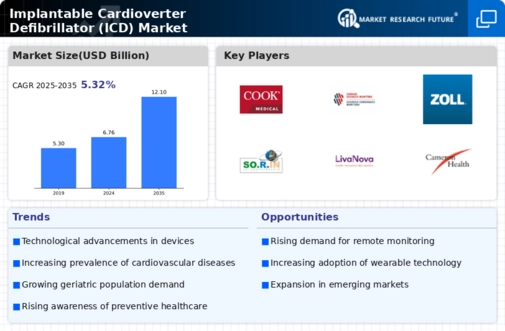
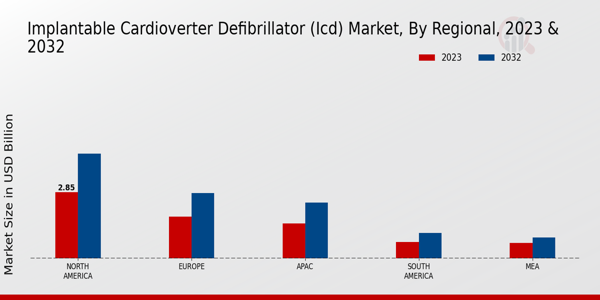
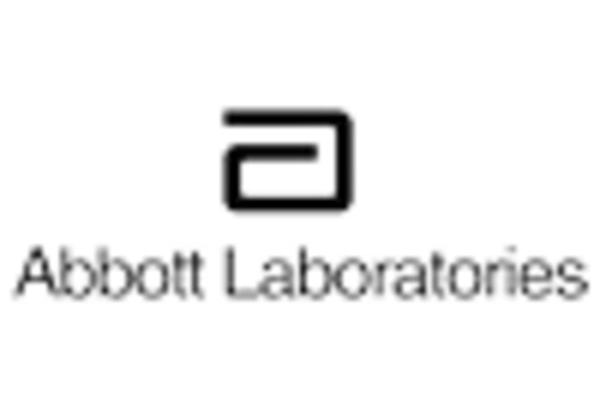
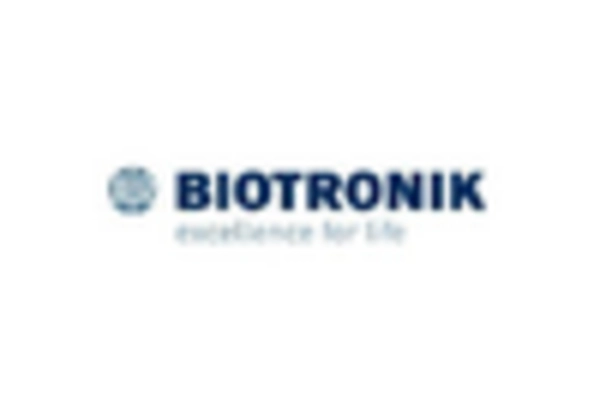


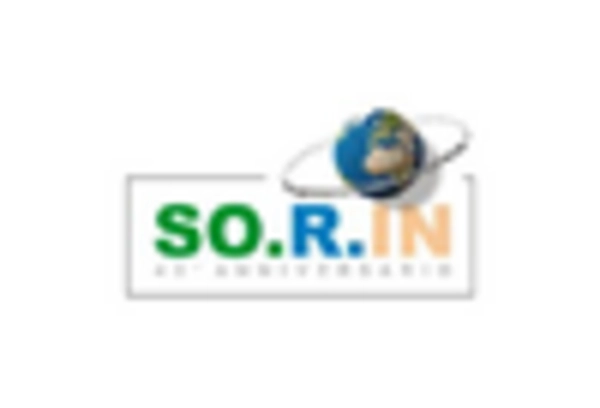


Leave a Comment